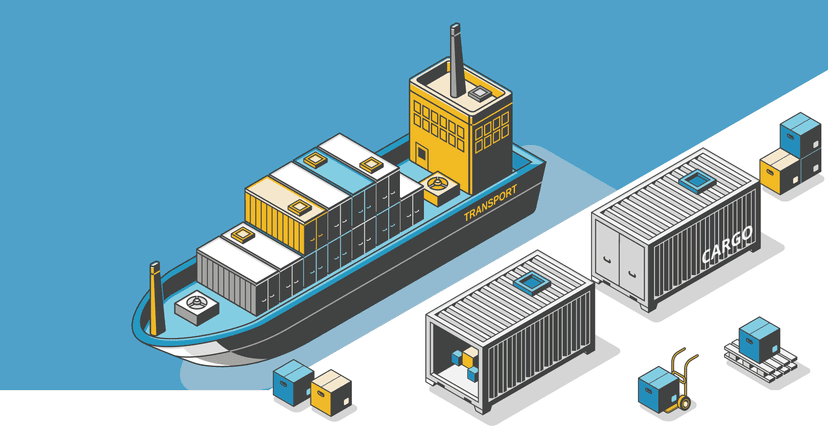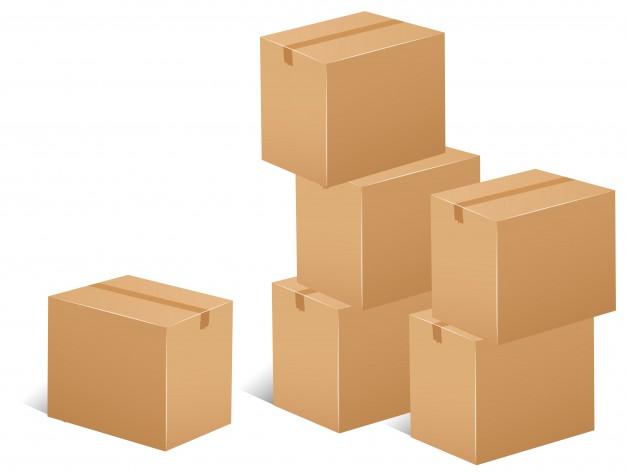
The Ultimate FCL Shipping Handbook: Costs, Benefits, and Best Practices for 2025
FCL shipping (Full Container Load) involves hiring an entire shipping container exclusively for your cargo, offering faster transit times an...
In this era of online shopping, we’ve all experienced the inconvenience and disappointment of receiving a damaged, short or incorrect product

In this era of online shopping, we’ve all
experienced the inconvenience and disappointment of receiving a damaged, short,
or incorrect product - courtesy of poor or insufficient secondary packaging.
While this matter can be resolved with a sales return,
it leaves a poor impression of the seller. If this happens regularly, it is
motivation enough to switch to another shopping portal – even if the products
on offer are of quality.
Now imagine this situation in an international trade transaction, where product orders are time bound and transit time is long. How would you feel if you’re the buyer? And more importantly, how would your business fare if you’re the seller?
In either case, not very good.
In any kind of trade transaction, especially where international logistics is involved, secondary packaging forms an essential part of a complete product or a shipment. A good outer packaging not only safeguards the product from damages, but also helps create a positive brand image.
Apart from the above reasons, here are a few more benefits of good external packaging that you must be aware of:
1. Eases Transportation and Reduces Cost: It is easier to handle and transport goods –small or large, if they are properly packaged. Good packaging also reduces the time taken to load and unload cargo on different modes of transport and ensures that the product reaches the end customer undamaged. Along with making transportation easy, proper packaging also reduces handling costs.
2. Reduces Risk of Pilferage and Theft: A strong external packaging that cannot be tampered with, helps reduces the chance of pilferage and theft. It is especially important for valuable and small products, where the risk of theft is high.
3. Maintains Quality and Product Standard: Good external packaging helps preserve the quality and standard of the product. It safeguards the products from extreme weather conditions like excess rains, heat, moisture, and reduces the risk of damages due to accidents.
In case of perishable goods, it also protects the product from decay and from losing its shelf life value.
4. Facilitates Timely Delivery: Correct and necessary handling instructions, weight and dimensions, and complete delivery address are an essential part of an effective external packaging. Packaging that contains all this information makes it easy to handle the product at every transhipment point and ensure that it is delivered to the right recipient.
Another point of import is to understand the extent
of loss that can occur due to faulty packaging. For example, according to an
analysis by TT Club, a transport and logistic insurer, of their own insurance
claims revealed that “65% of damages to cargo result from poorly packed,
blocked or secured cargo in CTUs, particularly freight containers”.
If you’re still not convinced about the benefits of a good packing, then the fact that the Indian packaging industry, estimated to be worth $25 billion, is growing at 15% p.a. and is expected to touch $30 - $35 billion by 2020, should help drive home the need, importance, and consumer expectations related to packaging.
To sustain and build your business in international trade, it is not only important for you to understand the importance of good packaging but also know how to choose the correct type of packaging for your shipment.
Some important points that you need to consider before selecting the packaging type and material are:
1. Type of Product: The kind of packaging that you select should be in sync with your product. Packaging is different for general products, machinery, spare parts, perishable goods, liquids, and hazardous cargo - each of these products have their own requirements, one solution cannot work for all. For example – perishable goods need to be packed in an insulated container, glass or fragile products require thicker containers or a double packaging.
2. Eco-friendly: When choosing packaging material, it is also necessary to ensure that the material you select for packaging is eco-friendly, reusable, recyclable and does not violate any environmental laws.
3. Mode of Transport: Apart from the product type, the mode of transportation also influences packaging choices. Packaging differs for Ocean and Air transportation. While air transport requires light packaging and can do with less sturdy material, ocean transport requires more sturdy packaging which can withstand the extreme weather conditions at sea and the long transit times.
4. Importing Country’s Packaging Requirements: It is imperative to know if the country that you are shipping to has any specific rules and regulations regarding packaging with respect to material, palletisation, and labelling on the packages, etc.
5. Specific Buyer Requirements: Some importers specify the packaging requirements for the the cargo that they are buying. This can be in addition to the packaging rules and regulations of the importing country. If you are an exporter it is important for you to get clarification on these requirements and follow them while packaging the products. The importer can refuse to accept the cargo if it is not packed as per the given specifications.
6. Costs: While all the above points are necessary to ensure that the cargo reaches the destination port without any damages or loss, you also need to consider the costs required in the packaging and ensure that it does not hamper your bottom line or margins.
7. Type of Shipment: The type of shipment –FCL (Full Container Load) or LCL (Less than Container Load) also plays a role in determining the kind of packaging. As compared to FCL, a sturdier and stronger packaging is required for cargo that is being transported in LCL shipment as your cargo will be sharing a container with other shipments.

Like primary packaging, secondary packaging is also a critical component of the entire business cycle. It not only safeguards your product, but it also protects your business brand and reputation. Hence, it is necessary to make secondary packaging an integral part of your product offering and work towards finding new, innovative, safe, and cost effective packaging solutions.
After your goods are packaged, marked, and labelled properly, it is our responsibility to get them delivered to the final destination. All you need to do is sign up on Cogoport and share the shipment details, we’ll manage the rest!